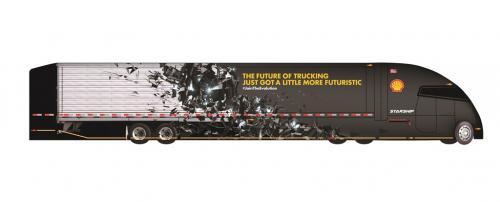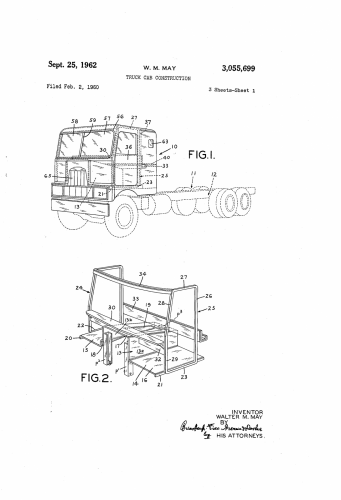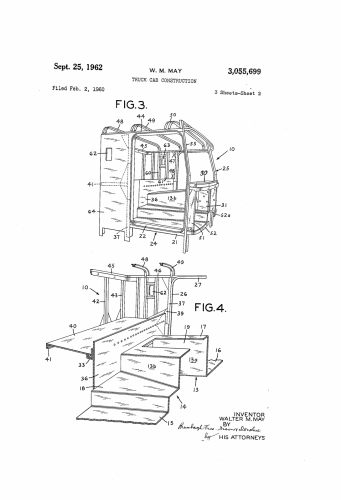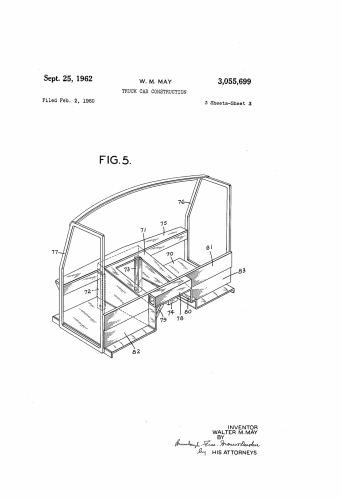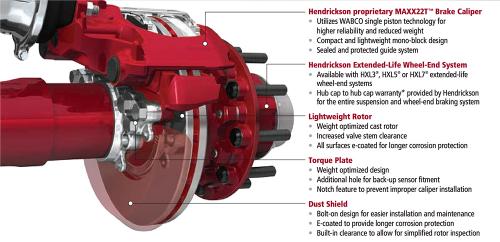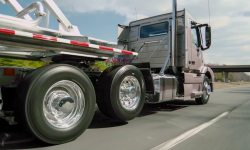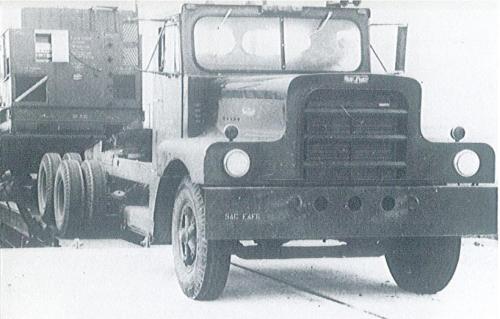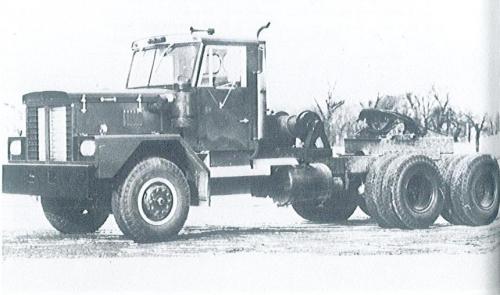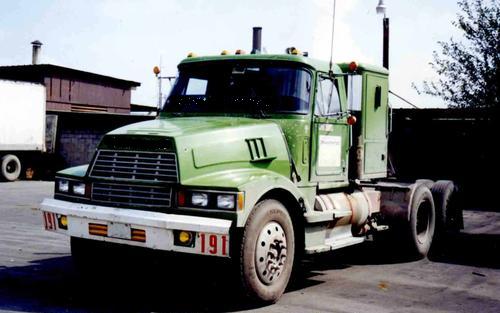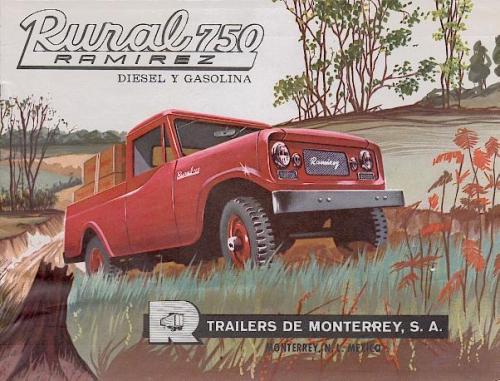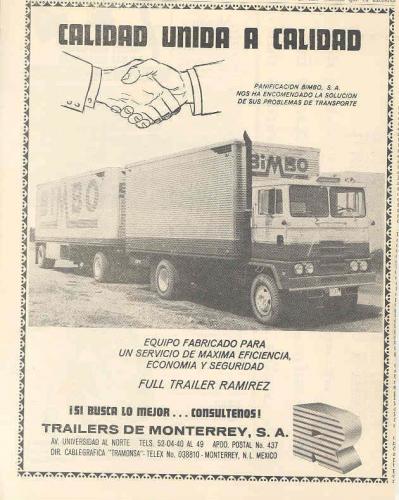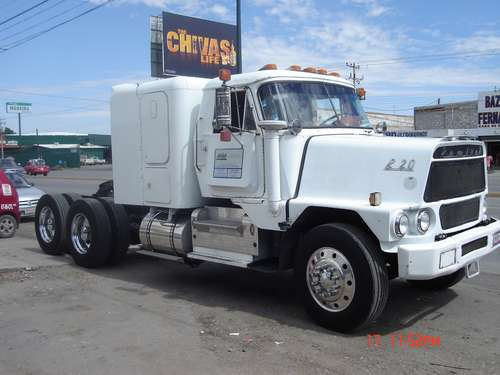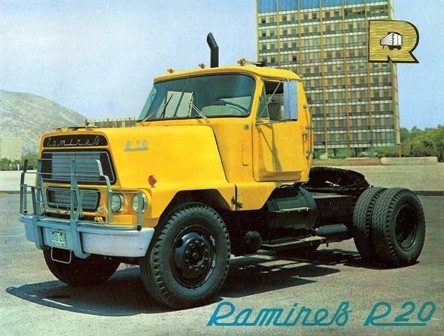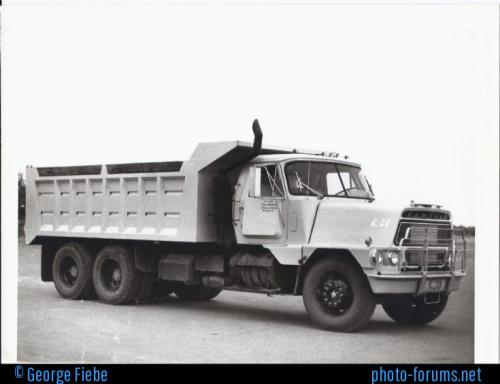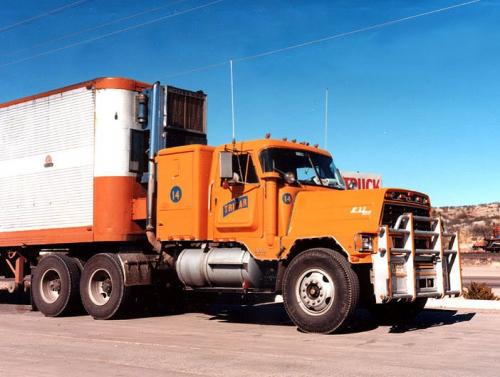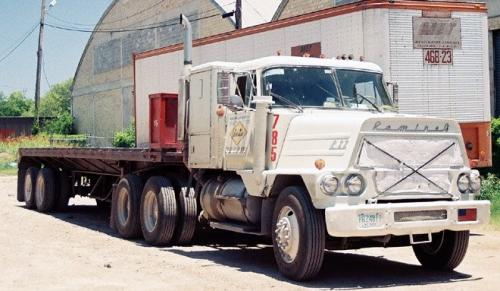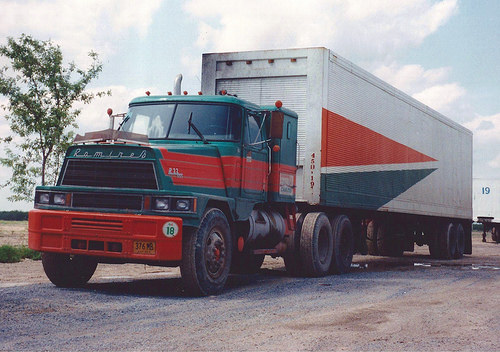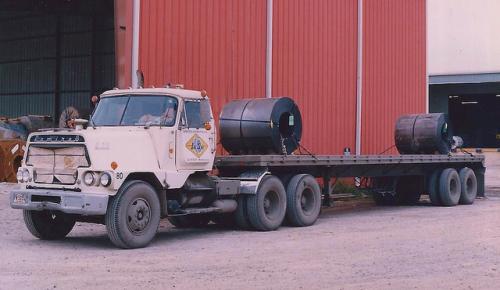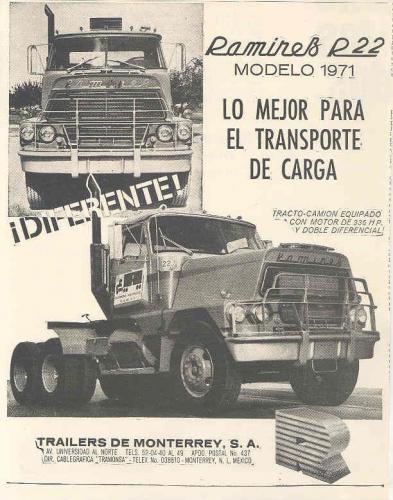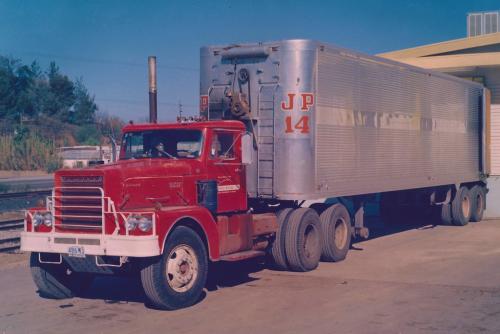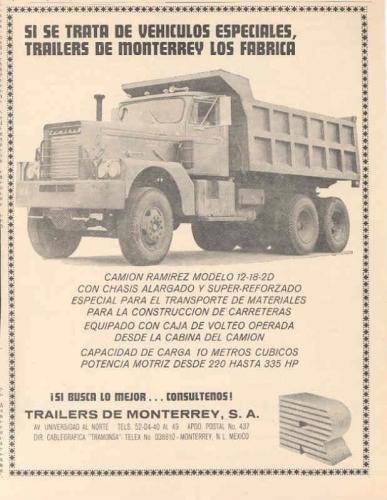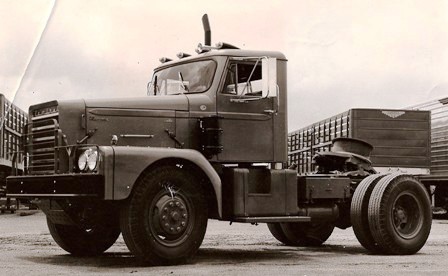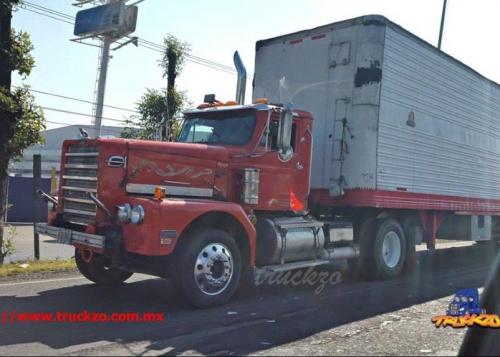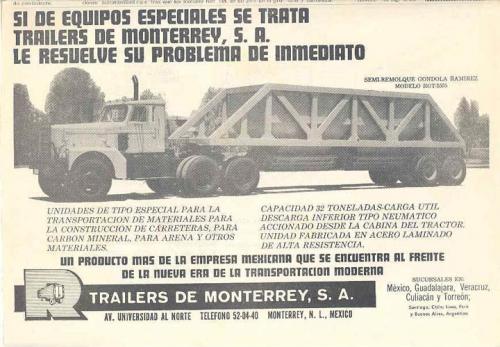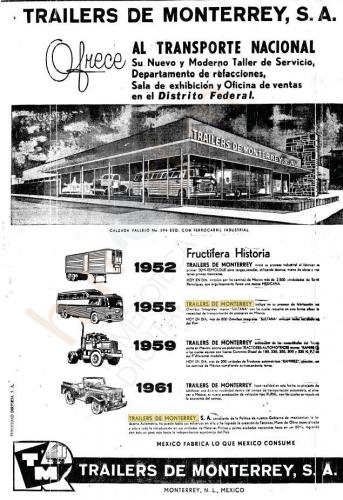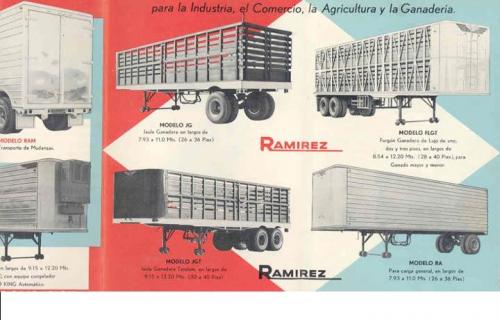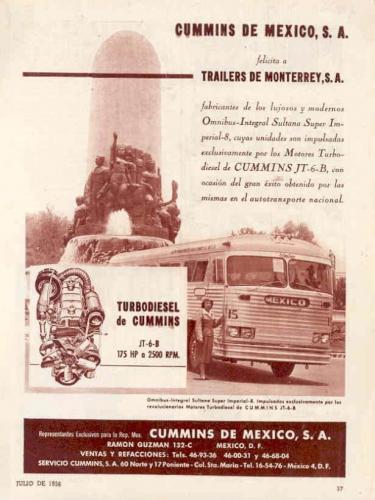
kscarbel2
Moderator-
Posts
18,864 -
Joined
-
Days Won
114
Content Type
Profiles
Forums
Gallery
Events
Blogs
BMT Wiki
Collections
Store
Everything posted by kscarbel2
-
Shell sponsoring new “hyper-fuel mileage” tractor-trailer design
kscarbel2 replied to kscarbel2's topic in Trucking News
The roots of such aerodynamic truck design architecture stem back to Preston Trucking (The 151 Line), where impressive cutting edge American innovation was spurred by Caterpillar's National Fuel Conservation Challenge. http://www.bigmacktrucks.com/index.php?/topic/31813-the-preston-aero-how-to-make-a-brigadier-slice-through-the-wind/ Preston Trucking, I feel, was remains the best LTL carrier to ever operate in these United States. -
Fleet Owner / March 27, 2015 Lubricants is stepping outside of its traditional “fluid engineering” box in the trucking world to help sponsor the development of a new “hyper-fuel mileage” Class 8 tractor-trailer design being built by the AirFlow Truck Company (http://www.airflowtruck.com/) and its principal owner and designer, Bob Sliwa. At a press event here at the Mid America Trucking Show (MATS), Dave Waterman – North American marketing manager for the Shell Rotella engine oil brand – noted that this “next-generation” concept truck, nicknamed the “StarShip,” is being built by Airflow in a 6,400 ft. garage in Connecticut and should be ready for testing by late next year. “We’ll be doing shake down testing and some regional runs by the third quarter of 2016, with coast-to-coast by the fourth quarter of 2016,” Silwa noted. He added that he rolled out first “hyper-fuel mileage” concept vehicle, dubbed the “Bullet Truck,” back in 2012. Crafted from a 2003 model Kenworth T2000 over a period of three years, Silwa said it achieved average fuel economy of 13.4 mpg under load on aa cross-continental haul from Connecticut to California. “I actually averaged 14.1 mpg until we ran into 35 mph headwinds in Laramie, WY,” he noted. The new “StarShip” vehicle (seen at right), however, is being built on a 2016 Navistar International ProStar chassis, which will include a 2010-compliant engine equipped with selective catalytic reduction (SCR) emission control technology. “We’re building our own cab for this concept and will be 100% EPA certified to operate on the road,” Silwa said. He’ll be loading the StarShip tractor-trailer combination with ballast up to 65,000 lbs. gross vehicle weight; a GVW he said 70% of today’s freight-hauling trucks opera Initial He added that initial designs call for the StarShip tractor and trailer to join together into a single integrated unit. “This will solve the problem of having a gap between the tractor and trailer, which is a big source of aerodynamic drag and loss of efficiency,” Silwa stressed. The StarShip tractor and trailer alike will feature side skirts, hood, front end and custom interior, along with a tractor-to-trailer “active aerodynamics” gap sealer. Both the gap sealer and trailer skirts will retract below 35 mph or when coming up on obstructions such as a railroad crossing, etc., Silwa said. Waterman said noted that while Shell will be providing some engine and lubricant to the StarShip project, Silwa will remain the chief owner, designer and driver of the vehicle. Waterman also emphasized that the project will use “fuel ton efficiency” as its guiding metric. “That more effectively measures fuel efficiency when fully loaded,” he explained. Selda Gunsel, vice-president of technology for Shell Global Solutions, noted in a separate statement that the pursuit of significant fuel economy gains for class 8 trucks and trailers is a challenging process given the size and traditional construction of a tractor and trailer. With new fuel economy regulations on the horizon and the need for continuing advances in fuel economy, Gunsel said Shell “recognized” that a “holistic approach” is needed to generated larger fuel economy gains, including advances in engine and drive train technology, the use of low viscosity synthetic lubricants, aerodynamic designs, efficient driving methods and more. “That’s why we intend to stay at the forefront of innovation – collaborating with companies like AirFlow to develop creative solutions that will benefit the industry for years to come,” Gunsel explained. “During our continuous on-highway testing of Shell Rotella engine oils and other lubricants, we always seek to understand how efficiencies can be gained across the whole truck,” added Chris Guerrero, global brand manager for Shell Rotella. “Aerodynamics plays a big role in achieving higher fuel economy and we look forward to working with Bob Sliwa and AirFlow Truck Company on the evolution of an all-new hyper fuel mileage tractor and trailer,” he said. In other news, Kate Faucher – global transport marketing projects lead for Shell Lubricants – provided an update on the PC-11 engine oil spec development process at Shell’s MATS press event: In development since 2013, final specs for the PC-11 category are right now expected to be released March 1, 2017;Two PC-11 requirements – for scuffing and compatibility with biodiesel – have officially been scratched from the PC-11 draft standard;Two subcategories – dubbed PC-11 A and PC-11 B – are being developed, with PC-11 A designed to backward compatible while PC-11 B won’t be;PC-11 B is being formulated as a thinner viscosity 30 weight oil focused on delivering maximum fuel economy, thus why it won’t be backward compatible;At the moment, PC-11 A will be designated CK-4 when officially licensed in 2017; PC-11 B is being tentatively titled FA-4, with the “F” standing for “fuel economy.”.
-
Mack production line fire?
kscarbel2 replied to wiserfrombud's topic in Modern Mack Truck General Discussion
Thanks for setting me straight on the "G". I'd forgotten that Orrville built that.........it's been years. Believe it or not, upon doing a clean-up around Macungie in the late 1980s, we discovered that we had a G-model frame assembly (at least one as I recall). Obviously it had been transferred over from 5C at some point. But it was rough having been outside for so many years. -
Mack production line fire?
kscarbel2 replied to wiserfrombud's topic in Modern Mack Truck General Discussion
Just FYI, the F-model and WS/WL Cruise-Liner cabs were assembled in-house by Mack Trucks. The MB was the last cab produced for Mack Trucks by Orrville (vendor code 6124). -
Volvo CEO wins breathing space as chairman denies seeking replacement
kscarbel2 replied to kscarbel2's topic in Trucking News
Setback for Volvo in MD-hunting Dagens Industri / March 27, 2015 Volvo's Board has suffered a setback in efforts to recruit a successor to CEO Olof Persson. It is uncertain whether the main candidate will now take job, this according to well-placed sources. According to new information, the situation has now changed causing a notice from Volvo to probably delayed. The reason being that the Volvo Board headed by Chairman Carl-Henric Svanberg had advanced discussions with a major candidate who now appears to be about to pull out of the recruitment process. The main candidate was hesitant after having had conversations with their current employer who was not prepared to allow the candidate to become CEO of Volvo. Reuters reported last night that Volvo's chairman Carl-Henric Svanberg was denying last week's media reports that the company wants to replace Olof Persson as CEO. The extremely brief comments from Carl-Henric Svanberg should be measured against the fact that a board officially always give unqualified support to its CEO until he/she has been relieved. -
Reuters / March 26, 2015 Volvo's CEO Olof Persson appeared to have won some breathing space on Thursday after recent criticism of the Swedish truck maker's performance but he needs to show progress over the next year to placate investors. Volvo's chairman Carl-Henric Svanberg on Wednesday denied a newspaper report that he was actively looking for a replacement for Persson, who has led a drive to boost profitability since taking over in 2011. At the time, Persson pledged to increase profit margins by 3 percentage points by the end of 2015, but the target is looking increasingly out of reach. Last year, Volvo's margin fell to 2.1 percent, far below the 8.7 percent it stood at before the start of the efficiency scheme. Analysts expect Volvo, which has been locked in battle with Daimler (DAIGn.DE) and Volkswagen's (VOWG_p.DE) truck brands for market leadership, to reach an operating profit margin of 7.1 percent by the end of 2016, Thomson Reuters data shows. Activist fund Cevian, the second biggest owner of the firm by votes, had called for it to end 2014 with a double digit margin. A partner at an asset management firm with stakes in Volvo who declined to be identified said he still had confidence in Persson, and that there had been some unfair criticism of him. "But if you ask me in a year and much still hasn't happened within the company, then he's probably in a worse position," he said. Since 2011, the Swedish firm has spent heavily on new model launches and to comply with tougher emission rules, while contending with weak demand in Latin America, a lackluster European recovery and a deep fall in demand for construction equipment in China. Persson said in February the efficiency drive aimed at saving 10 billion crowns ($1.15 billion) was going "according to plan". Volvo has underperformed peers such as Volkswagen's Scania and U.S. truck maker Paccar whose more nimble production structure have them left better able to cope with swings in demand and adjust output. Since Persson took the helm in September 2011, Volvo shares are up around 34 percent compared with a nearly 75 percent gain in the STOXX Europe 600 Industrial Goods & Services Index .SXNP and a more than 135 percent rise for German rival Daimler. Shares were down 0.95 percent at 1103 EDT, while the broader Stockholm share index .OMXS30 fell 1.4 percent. Volvo’s four biggest owners were not immediately available for comment. .
-
Press Release / September 25, 1962 Engineer Walter M. May of Allentown, Pennsylvania, assignor to Mack Trucks, Inc of Plainfield, New Jersey, a corporation of New York, had received a patent on his invention relating to an improved type of cab for cab-over-engine (COE) or tilting-cab trucks. In trucks in which the engine is disposed underneath the cab, it is common to provide a centrally located tunnel in the floor of the cab which serves as a hood for the engine. The hood is usually completely or partially removable and inasmuch as it is merely a cover for the engine, it adds little, if any, structural strength to the cab. In some cab-over-engine vehicles, the cab may be mounted for movement relative to the vehicle frame and is not reinforced by the vehicle frame. In order to pre vent racking and twisting of such movable cabs and to render them self-supporting, it is common to provide relatively stiff and heavy sill members on which the floor and the door frames, and other framing for the cab are mounted. In accordance with the present invention, a unitary cab construction is provided in which the tunnel for covering the engine serves as the principal reinforcing element and support for the floor and other parts of the cab structure thereby doing away with the need for heavy floor sill members. More particularly, in accordance with the present invention, the tunnel is formed of stiff metal, such as aluminum of substantial thickness, and carries on its opposite sides floor panels having door frames united with their lateral edges and with transverse beams at the forward and rear edges of the tunnel. The front and rear transverse beams serve as outriggers for suspending the door frames and the floor panels from the tunnel and, with it, form a strong, rigid frame for the cab. Other framing members may be assembled on the floor and joined to the elements described above and the cab may then be completed by welding, riveting or otherwise securing panels, formed for example of aluminum, fiber glass or the like to the framing. As a result, a very strong, rigid and lightweight cab construction is provided which is capable of withstanding the racking and twisting forces to which it is subjected in use and when it is tilted or otherwise moved to uncover the truck engine. For a better understanding of the present invention reference may be had to the accompanying drawing in which: FIGURE 1 is a perspective view of a typical cab embodying the present invention and showing, in dotted lines, a typical truck chassis with which the cab is used; FIGURE 2 is a perspective view of a partial assembly of the cab including the basic reinforcing elements thereof; FIGURE 3 is a perspective view of the cab looking from the opposite side and showing the cab with a part of the side paneling applied to the framing thereof; FIGURE 4 is a perspective view of a portion of the interior of the cab illustrating details thereof; and FIGURE 5 is a perspective view of the basic reinforcing elements of a modified form of cab viewed from the rear thereof. The cab in the embodiment shown in FIGURES 1 to 4 is mounted on the truck 11 for pivoting movement around its front end relative to the frame 12 of the truck to give access to the engine (not shown) which is mounted in the frame below the cab and is partially housed within a tunnel 13 in the cab floor 14. It will be understood, of course, that the cab may be fixed relative to the frame 3,055,699 Patented Sept. 25, 1962 or mounted for horizontal sliding movement, for vertical movement or for tilting laterally or rearwardly as desired to uncover the engine. In accordance with the present invention, the tunnel 13, and particularly the side panels 13a and 13b thereof, is the principal reinforcing and supporting element of the new cab. The floor 14 of the cab includes two relatively flat panels 15 and 16 disposed on opposite sides of the tunnel 13 which, as shown, has generally rectangular rearwardly inclined top surface 17, and a stepped portion 18 in the panel 13b to accommodate operating components of the vehicle. The floor 14 including the tunnel 13 may be formed of a single piece of relatively heavy gauge material, such as aluminum, so that it is essentially rigid. If desired, the floor and tunnel may be made up of several pieces of sheet metal welded or otherwise secured together to produce a unitary structure. Thinner sheet metal can be used in the panels 15 and 16 than the sides of the tunnel 13. An opening 19 is formed in the top of the tunnel through which extend the gear shift and parking brake levers (not shown) or other elements required in the operation of the vehicle. As shown in FIGURE 2, the outer lateral edges of the floor 14 are provided with downwardly extending flanges 20 and 21 to which are welded or otherwise secured the bottom sill edges 22 and 23 of the door frames 24 and 25. The door frames may be of any desired shape but, as illustrated, each has a substantially vertically disposed straight rear edge 26, a top sill 27 parallel with the lower sill 23, a forwardly and downwardly inclined portion 28 and a substantially vertical portion 29. The cab doors will, of course, be shaped to conform to the frames and may be suitably hinged to the frames. A transverse beam 30 of angle cross-section is secured to the forward portion of the tunnel 13 and has its opposite ends secured to the Vertical front portions of the door frames 24 and 25. The front beam also forms a part of the cowl for the cab and is the principal reinforcing and supporting element for the windshield and the instrument panel of the vehicle. As shown in FIGURE 3, the beam 30 is secured to the front of the tunnel by means of angular gussets 31 riveted or otherwise secured to the sides of the tunnel and to the vertical flange 32 of the beam 30 at each side of the tunnel. Extending transversely at the rear of the tunnel is another beam 33 of generally L-shaped cross-section which is secured to the top rear portion of the tunnel 13 and at its opposite ends either directly or through another structural member to the rear uprights of the door frames 24 and 25. Also, the top front corners of the door frames 24 and 25 are connected by a headpiece 34 of angle or channel cross-section which further reinforces the door assembly. As shown in FIGURE 2, the side panels 13a and 13b of the tunnel carry the pivot supports P and P by means of which the cab is pivotally mounted in the truck frame 12. Also at the rear of the tunnel 13 is a supporting block P which engages a support (not shown) on the truck frame. The cab thus is supported at three points on the frame. The other portions of the cab outboard of the tunnel 13 are not supported by the frame. The beams 30, 33 and their connections with the door frames 24 and 25 form outrigger supports for the floor panels 15 and 16. In other words, the tunnel 13 forms a backbone on which all of the other elements of the cab are supported. The side panels 13a and 13b are the principal supporting elements of the tunnel 13. In some trucks, a sleeping compartment is provided for one of the drivers of the vehicle. To that end, and as shown in FIGURES 1 and 4, a partition or bulkhead 36 is welded, riveted or otherwise secured to the floor 14, the front face of the beam 33 and to the uprights or frame members 37 (FIGURES 3 and 4) secured to the upright portions 26 of the door frames 24 and 25. As shown, the uprights 37 are interposed between the ends of the beam 33 and the door frames 24 and these elements are welded, riveted or otherwise formed to form a unitary structure. Appropriate reinforcements such as gusset plates 39 may be used where required. Extending rearwardly from the partition or bulkhead 36 and carried by the horizontal flange of the beam 33 is a panel 40 which forms a support for a mattress or the like. The rear edge of the panel is supported on a channel member 41 which extends horizontally across the back and along the sides of the cab and is joined to the vertical frame members 42, 43 etc. which support the sheathing for the back of the cab and to the framing members 37. Also, the upper ends of the several framing members 37, 42, 43 etc. and the tops of the door frames 24 and 25 are joined by means of beams 44, 45 and 46 which extend around the upper perimeter of the cab body. Appropriate reinforcing elements, such as gusset plates 47, 48 may be used at points where the framing members engage the beams of the vehicle. The floor 14 may extend back to the frame members 42, 43 etc. or may terminate in front of them as shown in FIGURE 4. In the latter case a member similar to the member 41 will be used to connect and reinforce the lower ends of the frame members 42, 43 etc. and support the sheathing or skin of the cab. Extending between the beams 44 and 46 are top bows 48, 49 and 50 which may also be formed of light metal of I-beam, channel cross-section or other suitable shape as shown in FIGURES 3 and 4. Front corner reinforcing plates 51 (FIGURE 3) are interposed between and fixed to the floor 14 and the front beam 30 thereby further stiffening the assembly. A pair of reinforcing channel members 52, 52a extend across the front of the floor plate 14 on opposite sides of the tunnel 13 and add to the stiffness of the floor 14. Vertical framing elements 55 are disposed in front of each of the door frames 24 and 25 and extend from the floor to the headpiece 34 and support for the windshield frame in which the weather seal 56-, the windshield panels 57 and 58 and the windshield divider strip 59 are mounted. It will be understood that other short framing elements 60 and 61 may be mounted in the opposite sides of the cab for supporting ventilators or Windows 62 and 63 in the sleeping compartment of the cab. The above described cab frame is provided with an appropriate sheathing 64 which covers the sides and the top of the cab and extends partially across the front of the cab to outline the area in which the radiator grill 65 of the vehicle is mounted. The sheathing may be sheet material, such as sheet metal, fibre glass or the like which is welded, riveted or otherwise secured to the framing elements. In addition, it will be understood that the inside of the cab may be paneled with metal, plastics, wood, or the like, and the cab may be insulated and provided with a rear view window (not shown). The new cab structure is essentially unitary. The tunnel 13 serves as the backbone of the cab and together with the remainder of the floor and the cross beams 30 and 33 and the framing and reinforcing elements connected thereto provides a rigid structure capable of Withstanding the forces to which the cab would be subjected in its normal usage. FIGURE 5 illustrates another modification of the reinforcing structure of the cab. It includes a floor including a tunnel 71 for covering the vehicle engine. The side panels of the tunnel 71 carry the forward pivot supports 72 and 73 for the cab, while the third rear support 74 is affixed to the rear end of the tunnel at about its center. This form of cab also includes a front, transverse beam 75 having its mid-portion secured to the top and the side panels of the tunnel 71 and its opposite ends joined to the front portions of the door frames 76 and 77. A short beam member 78 of box section is secured to and extends across the rear end of the top panel of the tunnel and serves to carry the stresses exerted on the support 74 to the side panels of the tunnel 71. For better distribution of these stresses and transfer of them to the side panels, angle members 79 and 80 are welded to the top of the tunnel and beam 78 and to the side panels of the tunnel. In this form of cab construction, the rear edges of the door frames 76 and 77 are connected to the tunnel by means of a beam formed of a plate or bar 81 of relatively thick metal which is welded or otherwise secured to the beam 78 and to the top and sides of the tunnel. The space between the lower edge of the plate 81 and the floor 70 may be closed by means of filler plates or sheets 32 and 83 of thin sheet material such as sheet metal or fiber glass. With the arrangement described, the rigid tunnel and the beams extending laterally from the tunnel support the door frames and the floor portions on opposite sides of the tunnel as well as the framing paneling and other elements of the cab. The basic cab structure shown in FIGURE 5 can be completed by means of framing members and paneling as described above. It may be provided with a sleeping compartment as disclosed in FIGURES 1 to 4, or the sleeping compartment can be omitted and the framing and the paneling can be constructed around and united with the perimeter of the floor 70. It will be understood that the cab is susceptible to considerable modification in its overall appearance, size and the like and that the shape and the size of the windshield, the arrangement and ornamentation of the radiator grill and the like are susceptible to wide variation. Accordingly, the form of the invention described herein should be considered as illustrative. I claim: 1. A cab for a motor vehicle having a frame comprising a floor plate having front, rear and side edges and a substantially centrally located substantially rigid tunnel extending upwardly from and lengthwise of said floor plate between its front and rear edges, said plate having floor portions lower than and on opposite sides of said tunnel, door frames secured to the side edges of said floor plate, and transverse beams united with the tops of the front and rear ends of said tunnel and extending between and secured to said door frames in vertically spaced relation to said floor portions and supporting the door frames and said floor portions outboard of said tunnel and means at the front and rear ends of said tunnel for supporting said plate on said frame. 2. A cab for a motor vehicle comprising a floor plate having front, rear and side edges and a substantially centrally located tunnel integral with and projecting above said floor plate and extending from its front edge to its rear edge, said plate having floor portions lower than and on opposite sides of said tunnel, door frames united at their lower ends to said side edges of said plate, a transverse beam united with the top of the front end of said tunnel and extending between and secured to the front of the door frames above and in spaced relation to said floor portions and a second beam secured to the top of the rear end of said tunnel and extending between and secured to the rear of said door frames above and in spaced relation to said floor portions. 3. The cab set forth in claim 2 comprising a platform having a front edge joined to said second beam, and substantially coextensive in length with the width of said floor plate, said platform extending rearwardly from said second beam, framing members united with said floor plate, with said beams and with said platform, and sheathing secured to said framing members, to said floor plate and to said beams to form a cab enclosure. 4. A cab for a motor vehicle comprising a floor plate having front, rear and opposite sides edges, and a substantially centrally located tunnel integral with and projecting upwardly from said floor plate and extending from its front to its rear edge, said plate having floor portions lower than and on opposite sides of said tunnel, a first unitary beam having its mid-portion united With the front end of said tunnel adjacent to the top thereof and extending transversely With relation to said floor plate with the ends of said beam spaced vertically from said floor portions, a second beam having its mid-portion united with the rear end of the tunnel and extending transversely with relation to said floor plate With the ends of said beam adjacent to but spaced vertically from the said floor portions, door frames having lower edges united with opposite side edges of said floor plate and front and rear vertical edges secured to said ends of said first and second beams, respectively, and means at the front and rear ends of said tunnel for supporting said floor plate on said vehicle. 5. The cab set forth in claim 4 comprising peripheral framing members extending upwardly from said side edges of said floor plates and opposite ends of said first beam, and other framing members joining the upper ends of said peripheral framing members. References Cited in the file of this patent UNITED STATES PATENTS 2,064,100 Bachman Dec. 15, 1936 2,485,794 Waterbury et al Oct. 25, 1949 2,912,057 Wagner Nov. 10, 1959 FOREIGN PATENTS 616,466 Great Britain Jan. 21, 1949 1,020,535 Germany Dec. 5, 1957 S 32,559 Germany Sept. 1, 1955 .
- 1 reply
-
- 4
-

-
Mack production line fire?
kscarbel2 replied to wiserfrombud's topic in Modern Mack Truck General Discussion
There was a fire..........on February 9th at Sigma Industries’ René Composites Materials Ltd. subsidiary in Saint-Ephrem-de-Beauce, Quebec. The company is playing down the damage saying only that a leased building was severely damaged. However, the news media states the building was completely destroyed (http://www.enbeauce.com/actualites/faits-divers/211335/une-usine-de-rene-materiaux-composite-detruite-par-les-flammes-a-saint-ephrem). The company said production would shift to the company’s other faciities in Saint-Éphrem-de-Beauce and Sainte-Clotilde-de-Beauce ASAP. Interestingly, there was a multi-million dollar fire there in 2005 (http://www.tomifobia.com/st_ephrem_fire.html). ------------------------------------------------------------------------------------- Thru 1990, Mack Trucks sourced its fiberglass hoods from Windsor, New Jersey-based Structofab (how many Mack veterans on here remember that name?). Then, hoods were sourced from René Composites Materials Ltd., which had been founded in 1977. The overall quality was better. Founded in 2005, Quebec-based Sigma Industries went on a buying spree that consolidated Canada’s composite component industry. In March 2006, the company acquired Faroex Ltd. in Gimli, Manitoba, which specialized in the development and manufacturing of composite components for the road transportation industry, agriculture and windmill energy. In June 2006, Sigma Industries acquired René Composites Materials Ltd. (aka René Matériaux Composites Ltée) in 2007. In January 2007, Sigma Industries acquired Camoplast's truck composite division in Acton Vale, Quebec which produced hoods for medium and heavy trucks. In February 2007, Sigma acquired, through Rene, all the shares of Groupe Synergy Composites (GSC) in Chesterville, Québec which developed composite products and technology for the utility vehicle and bus industries. GSC had also developed a unique lightweight and corrosion-resistant composite body for the transportation sector. At some point, the Rene-produced hoods became branded as Camoplast hoods. The spec sheets read: Hood & Fenders, Fiberglass – Camoplast (http://www.brucknertruck.com/pdf/MackLiterature/GU813%20Axle%20Back.pdf). I believe the Camoplast plant in Quebec was closed, and production relocated to the two Rene facilities. There was also a Camoplast plant in Chillicothe, Ohio at one time operating as Camoplast Accufab, supplying the Kenworth plant there. Ten years ago, Meridian Automotive Systems was the largest supplier of SMC and composite parts to the heavy truck industry, Customers included Kenworth, Freightliner, Peterbilt, Paccar, Volvo and Mack. Meridian was acquired by Canada’s Magna International in June 2009. Today, I at least know that Magna supplies the hoods for the Kenworth T680 and Peterbilt model 579 out of their Saltillo, Mexico plant. I believe Magna still sells Freightliner. Core Molding Technologies, which also produces hoods for Paccar, and Navistar, announced in July 2013 that it would begin selling roofs, hoods and other molded parts to Volvo Group North America LLC, most of which would be produced at its Gaffney, South Carolina plant (Core Molding also has plants in Columbus and Batavia, Ohio, and Matamoros, Mexico). Trivia: The first bolt-on aerodynamic device were created by Rudkin-Wiley Corporation in 1965. When the MH Ultra-Liner was introduced, a custom-designed Rudkin-Wiley “Airshield” aerodynamics package (roof and side fairings) was a factory option. Rudkin-Wiley evolved into Airshield Corporation, which was acquired by Core Molding Technologies in 2001. A long time supplier of the technology that allows the manufacturers to do what they do, speaking of the liquid molding resin, is Metton America (http://www.metton.com/index.php/metton-lmr/applications). -
Daimler Says SuperTruck Program Shows 115% Efficiency Improvement
kscarbel2 replied to kscarbel2's topic in Trucking News
Freightliner turns heads with SuperTruck concept vehicle Commercial Carrier Journal (CCJ) / March 25, 2015 Freightliner unveiled its impressively futuristic SuperTruck prototype vehicle at the Mid-America Trucking Show this week, capping a five-year development process in conjunction with the U.S. Department of Energy and other leading industry manufacturers and suppliers. Diane Hames, marketing director for Daimler Trucks North America, noted that Freightliner received the largest industry grant from the U.S. government. That sum, of $40 million was matched by Daimler and used to develop the highly sophisticated and sleek vehicle showcased in the Freightliner booth at this Mid-America Show. Details on the truck were few, although Freightliner promised industry press an in-depth test drive later this spring. The features listed by Freightliner are impressive, however. They include a 115 percent boost in vehicle freight efficiency, compared to conventional tractors on the market today. Other enhancements include a 50.2 percent increase in engine brake, a 54 percent reduction in overall aerodynamic drag and — most impressive of all — sustained 12.2 miles per gallon logged at 65 miles per hour on a stretch of I-35 between San Antonio and Dallas, Texas. Under its skin, the Freightliner SuperTruck is an intriguing mix of current DTNA powertrain components and wholly new technology. The engine is a 10.7 liter Detroit diesel generating 375 horsepower and 1,375 pound-feet of torque. The engine features a rankin cycle waste heat recovery system, model-predictive engine controls and a hybrid driveline mated to a conventional DT12 automated manual transmission. The rear axle ratio is 2.28.1. Other tidbits include a variable-geometry front radiator grill to optimize and balance cooling system performance and aerodynamic drag, as well as a fully-flush cab, sleeper and roof surface. The bonded front windshield is raked at a sleek 32 degree angle and streamlined rear-view mirrors are enhanced with a rear-view camera system. Solar panels are installed on the trailer roof to capture “free” energy to recharge batteries and power the fully-electric HVAC system. High-tech, lightweight composite materials were used throughout the vehicle and a high-tech software program actively manages kinetic energy for optimal feedback into the truck’s powertrain. Hames stressed that this SuperTruck models is a prototype only, but noted that several features finalized during its development process have already found their way onto current Freightliner models, with even more features sure to debut soon on the next-generation of Daimler highway tractors. Related photographs: http://www.ccjdigital.com/freightliner-turns-heads-with-supertruck-concept-vehicle/ -
Wabco, Hendrickson to Offer Axles with Lightweight Air Disc Brakes
kscarbel2 replied to kscarbel2's topic in Trucking News
Hendrickson launches North American trailer air disc brake system Commercial Carrier Journal (CCJ) / March 26, 2015 Hendrickson Trailer Commercial Vehicle Systems launched a new line of trailer air disc brakes designed specifically for the North American market. According the Perry Bahr, vice president and general manager, the new MAXX22T is the first — and only — air disc brake system for trailers in North America today. Bahr noted that while trailer brakes are popular in Europe — and Hendrickson manufactures brakes for that market — the particular needs of the North American market caused Hendrickson to develop the MAXX22T specifically for fleets on this side of the Atlantic. The new brake system was developed in conjunction with WABCO and uses that company’s bi-directional single piston design with Hendrickson’s wheel end and brake components. The resulting system, Bahr says, results in a high reliability design with reduced weight and installation efficiency. Other MAXX22T features include a bolt-on splash guard that allows easy rotor inspection, a 20,000 pound gross axle weight and is compatible with Hendrickson’s TIREMAAX PRO and any Ready-To-Roll wheel end package. In business news, Hendrickson detailed the finalization of its acquisition of European spring manufacturer Frauenthal. According to Gary Gerstenslager, Hendrickson president and chief executive officer says the acquisition will allow the company to broaden its footprint on the European continent and better support its global customer base. . -
Today's Trucking / March 26, 2015 Eaton has expanded its lineup of Fuller Advantage Series transmissions to deliver weight savings and fuel-efficiency improvements available on nine new models. They include: Three manual transmissions with new direct drive gear ratios.Two automated models with new direct drive gear ratios.Four automated transmissions with new overdrive ratios. “Our customers have been asking us for additional ratio coverage in both direct drive and overdrive designs,” said Ryan Trzybinski, product planning manager, Eaton. “All of the direct drive additions are ideally suited for a variety of linehaul applications and will be especially beneficial for regional and LTL (Less Than Truckload) customers with day cabs and 6X2 axles. The other additions are ideal for linehaul/on-highway fleets and provide better options for customers preferring axle ratios that are best suited for an overdrive transmission.” All of the Fuller Advantage Series automated 10-speed transmissions, which feature a precision lubrication system that eliminates the need for an oil cooler, are available for delivery to all North American truck makers. “S” (Small Step) ratio models, with fuel-efficient shifting between 9th and 10th gears, are rated up to 80,000 GCWR (Gross Combined Weight Rating) only. The remaining models (direct and overdrive) will be rated up to 110,000 GCWR at the end of April this year. The precision lube system on Eaton Fuller Advantage Series transmissions reduces the oil churn energy losses found in traditional transmissions by nearly 33 percent. With less heat being generated the transmissions do not require a cooler, corresponding lines and fittings resulting in cooler system maintenance becoming obsolete. An oil level sight glass allows for routine oil checks to be performed at a fraction of the time typically required. In addition, the precision lube system uses only 16 pints of oil that is nearly half the amount used in traditional transmissions. The expanded lineup was announced at a press conference at the Mid America Trucking Show (MATS) in Louisville, KY, Thursday. Additional weight savings have been achieved by replacing cast iron with aluminum for the shift bar housing (manual models), auxiliary section cover and range cylinder. Exact weight savings are dependent on the make of truck purchased as cooler weights vary by the cooler manufacturer.
-
Fleet Owner / March 26, 2015 “The trucking industry is coming back in a big way,” observed Robert Woodall, assistant general manager for Peterbilt Motors Company, as he took the stage at the annual Peterbilt press luncheon here today. 2014 was the best year for the industry since 2006 and, except for the driver shortage, 2015 is shaping up to be a strong year for truck sales over all, he said. The company forecasts 250,000 to 280,000 Class 8 truck sales over all in North America this year. For Peterbilt, 2015 will be building upon the considerable successes of 2014. It was a record-setting year for the OEM which saw, among other things, a record 19.3% share of sales in the vocational market and a 30% share in the natural gas market. Underpinning the company’s optimism for the year ahead is a long line-up of new products and services as well as enhancements to existing offerings, including a new 58-inch sleeper for the Model 579, a new set-forward axle configuration for the Model 567, the debut of new predictive cruise control technology, the launch of a new “SmartLINQ” remote diagnostics system, and the introduction of a medium-duty CNG vehicle platform, plus LNG power for Models 579 and 567. Peterbilt also introduced the next generation of its in-dash “SmartNav” infotainment [sic] system and the expansion of its premium interiors offerings and shared news about the fuel economy gains the Model 579 EPIQ is turning in fuel efficiency gains of up to 14%. The advanced vehicle incorporates design elements from the SuperTruck project, which achieved 10.7 mpg in field testing. 58-inch sleeper for Model 579: “The 579 helped to redefine the Peterbilt product line when it was introduced,” Darrin Siver, Peterbilt general manager and PACCAR vice president told the audience. The new sleeper, which is planned to go into production during the fourth quarter, reduces weight by up to 100 pounds (versus the 80-inch sleeper) while including all of the driver amenities found on Peterbilt’s larger sleepers. It is available in both low- and mid-roof configurations to further increase its versatility to meet specific application requirements, including flatbed and tanker operations. The new sleeper includes a full-length door to help facilitate loading personal gear and belongings from outside the truck plus full-length, integrated extenders to minimize trailer gap and improve aerodynamic efficiency. It also features a full-length mattress and abundant storage areas (including cabinets under the bunk and on the back wall) plus a television mount, refrigerator and microwave shelf. Set-forward front axle configuration for Model 567: Available for order now with production scheduled to begin in June, the new set-forward axle configuration (SFFA) for its flagship vocational Model 567 is especially well-suited to mixer and other weight-conscious applications, according to the company. Like the set-back axle version, the Model 567 SFFA is available in both 115- and 121-inch BBC lengths. The 115-inch BBC has a bumper to front axle distance of 29 inches and the 121-inch BBC has a bumper to front axle distance of 31 inches. These dimensions were specifically engineered to maximize maneuverability while providing the ideal wheelbase to comply with bridge law requirements. Predictive cruise control: Anticipating and responding to changes in terrain – such as accelerating ahead of hills and coasting on the decline – Peterbilt’s new Predictive Cruise technology is designed to automatically optimize engine and transmission operation when in cruise control for maximum fuel economy. So-called “neutral coasting” utilizes the truck’s momentum to save fuel and engages the engine brake to manage downhill speeds. “By integrating the powertrain, cruise control and satellite mapping, the vehicle automatically responds to the road ahead for up to three percent improved fuel economy,” said Siver. According to Peterbilt chief engineer, Scott Newhouse, Predictive Cruise and neutral coast work together in five steps to maximize the truck’s kinetic energy: When approaching a hill, the system uses onboard maps and GPS data to accelerate to the optimal speed and adjust for the increasing road grade; Before the peak of the incline, the vehicle curbs its speed before proceeding downhill; Neutral coast engages as the truck rolls downhill; If necessary, the engine brake engages to avoid over speeding; and Cruising speed is maintained as the vehicle continues onto level terrain.SmartLINQ remote diagnostics system: Factory installed and fully integrated, Peterbilt’s new SmartLINQ remote diagnostics system is designed to provide customers with real-time, at-a-glance fleet health to maximize uptime, keep deliveries on schedule and manage service events. Newhouse explained how SmartLINQ works: “When a diagnostic code is generated, the severity of the code is analyzed. There are three general areas the diagnostic codes will fall into: service advised; service immediately; and stop engine,” said Newhouse. “Diagnostic code notifications will be sent via e-mail to whomever the customer designates with all of the information a fleet manager needs to get a vehicle serviced quickly to maximize uptime. Or, in the event of more severe service issues, make arrangements to get a load hauled by another truck to keep deliveries on-time.” All vehicles equipped with SmartLINQ can also be monitored in real time through a web-based portal customized for the customer. The at-a-glance interface includes a map of North America with each unit represented by an icon color coded to vehicle health: green for no events; yellow for diagnostic codes that need attention soon; and red for diagnostic code events that require immediate action. There are also icons to indicate related information, such as Peterbilt dealer locations. “In addition to the map display, fleet managers have access to a wealth of detailed, sortable data that is easily integrated with many other maintenance management platforms,” said Newhouse. SmartLINQ-equipped trucks include a dedicated modem, antenna, access to the portal and the complimentary, two-year subscription. Additionally, SmartLINQ is compatible with any telematics system. The system is scheduled to begin production in June and will be standard on all Peterbilt trucks equipped with a PACCAR MX-13 engine. It includes a complimentary two-year subscription. SmartLINQ will be expanded to other truck systems and platforms in the months ahead. Natural gas: Peterbilt, which has the lion’s share of the natural gas marketplace, also introduced two new medium-duty vehicles powered by compressed natural gas (CNG)—the Model 337 and Model 348. Both vehicles are now in production and can be ordered configured as trucks or tractors. “The CNG Models 337 and 348 give Peterbilt the industry’s most competitive portfolio of natural-gas vehicles,” Newhouse said. “The dimensions provide a BBC two inches shorter than any competitive model and a cab height that is 2.5 inches lower.” The optimized spec, including steering geometry that provides up to a 50 degree turning angle, provides improved maneuverability in congested city and jobsite operations. Both the Models 348 and 337 are powered by the Cummins Westport ISL-G with 320 horsepower and 1,000 lb.-ft. of torque. The engine complies with EPA 2010, 2013 and CARB regulations. Liquid natural gas (LNG) has also been added as a power option for Peterbilt Models 579 and 567, introduced earlier in CNG configurations. Both are available as daycabs; production is scheduled to begin in June. During the question and answer session at the end of the press event, Siver was asked about the impact of lower diesel prices on the demand for natural gas-powered trucks. The price of oil is cyclical,” he noted. Fleets are getting into natural gas for various reasons, including cost stability and for “green” requirements/wishes. About five percent of the market is now natural gas. Could it grow to ten percent? Probably. Could it grow to 25 percent? Probably not. But remember that trucks used to be powered mostly by gasoline, not diesel. Next generation SmartNav: Peterbilt also introduced the next generation of its in-dash SmartNav “infotainment” system that features an expanded array of virtual gauges, auto-activated safety cameras, improved hands-free calling and the capability to provide real-time traffic and fuel price information. One of the key improvements to the new SmartNav system is its ability to be customized with approved applications developed by Peterbilt, PACCAR or third parties,” said Newhouse. “For instance, future functionality could include integration with reefer trailers or truck bodies to provide operational data, like reefer temperature. SmartNav’s new flexible architecture allows it to be updated quickly with additional features and capabilities…Additionally, it is telematics-enabled to communicate with systems such as electronic logbooks and other fleet management platforms.” Premium interiors: The company also introduced the addition of the Platinum Graphite Interior Package to its line of premium cab and sleeper trim options for the Models 579 and 567 in daycab configurations or when equipped with a 72-inch or 80-inch sleeper. The new interior, intended to help fleets attract and retain good drivers, features black leather seats and blackwood trim on dash panels, door panels, storage header area and sleeper cabinets among other fit and finish elements. Autonomous vehicles: Peterbilt also shared a look ahead at autonomous vehicles, noting that several technologies are making the vision possible, including lane keeping, traffic assist (including automatic braking), GPS navigation and platooning. During the question and answer session, Siver noted that driverless vehicles are still “a long way off” for long-haul operations. “The biggest challenge is the comfort of the public with [the concept],” he said. The first use of autonomous vehicles will probably be in vocational operations or in contained areas such as yards or docks, Siver added. A video of a test truck did just that: drove thorough a yard, stopped to avoid a pedestrian in its path and parked itself. Not bad.
-
Today's Trucking / March 26, 2015 Eaton has introduced new electronic capabilities to its Fuller Advantage Series and UltraShift PLUS automated transmissions that allow for disengagement of a truck’s driveline while on slight downhill grades to drop engine speeds to idle. Eaton says the new technology improves fuel consumption by up to one percent and ensures safe operation regardless of driving conditions. The announcement was made at a press conference at the Mid-America Trucking Show (MATS) in Louisville this week. Known internally at Eaton as Neutral Coast Mode, it will be named SmartCoast when paired with a Cummins engine, Fuel Efficient Coast when paired with a Navistar engine, and Neutral Coast when paired with a PACCAR engine. It is available on all vehicles with a 2013 or newer Cummins ISX1, Navistar N13, or PACCAR MX-13 engine. “This new option promises to bring fuel efficiency improvements to linehaul fleets typically traveling on roads where hills and grades are present,” said Ryan Trzybinski, product planning manager, Eaton. “The gains will vary depending on the amount and severity of grades encountered.” Neutral Coast Mode allows the transmission to disengage the driveline by pulling out of gear on downhill grades where little or no engine power is required, when the vehicle is in cruise control and the transmission is in Drive mode. The vehicle’s display will simultaneously flash a gear number that represents the gear that the transmission will select when it is necessary to engage. The transmission exits Neutral Coast Mode under any of the following conditions: Vehicle brakes are applied.Driver presses accelerator pedal.Cruise control is cancelled.A mode other than Drive is selected.Cruise high or low set speeds are exceeded.Maximum vehicle grade is exceeded.Request by an adaptive cruise system.“Neutral Coast Mode features Eaton proprietary logic that works with the engine ECU or another ECU to determine the appropriate time for the transmission to decide when the driveline should be engaged or disengaged,” added Trzybinski.
-
Heavy Duty Trucking / March 26, 2015 Dana engineers are working on a Spicer Dual Range Disconnect tandem rear axle that combines the traction advantages of a dual-drive 6x4 configuration with the fuel economy of a single-drive 6x2. Executives showed off the concept on Wednesday, the eve of the Mid-America Trucking Show in Louisville, Ky. The design goes beyond a “clutched” rear or forward axle to enable a single-drive tandem, they said, by introducing the effect of a low and high range. But it does so without using old-style two-speed axles. “New fuel economy regulations for linehaul trucks are on the immediate horizon, and truck manufacturers are already addressing the challenge of reducing fuel consumption beyond the levels that can be achieved through today’s conventional powertrain systems,” said Mark Wallace, a Dana executive vice president and group president of Dana On-Highway Driveline Technologies. “Our advanced Spicer AdvanTek Dual Range Disconnect concept enables truck manufacturers to achieve substantial gains in fuel economy with a system that still performs dependably in adverse driving conditions.” The design employs a “slow” (high-numerical) ratio in the rear axle for startup and low-speed maneuvering, and on slippery pavement, he explained. Planetary-gear action in the interaxle differential mixes that with a “fast” (low-numerical) ratio in the forward axle to get a combined ratio, such as 3.10. The tandem then operates as a 6x4. At a pre-determined speed, electronic controls switch to the forward axle’s ratio, such as 2.21, to lower engine revs at higher road speeds. The rear axle is disconnected using a sliding dog clutch at each end of the interaxle driveshaft, and the interaxle differential is bypassed. The tandem then operates as a 6x2. Power and torque flow directly to the forward axle, eliminating meshing and fuel-burning drag of the additional gear sets. The concept supports “downspeeding” of the truck’s engine, which could cruise as low as 900 rpm – a trend that’s developing – for additional fuel savings, Wallace said. Because the range switch must be done precisely, the concept works best with an automatic or automated transmission, Wallace’s colleagues said. But it can work with a manual transmission. Dana engineers have been evaluating a prototype Advantek 40 tandem with the Range Disconnect feature for the last two and a half years, Wallace said. Engineers plan to install copies in truck chassis for further testing later this year.
-
Heavy Duty Trucking / March 26, 2015 Volvo Trucks introduced the Adaptive Loading 6x2 liftable forward axle at the Mid-America Trucking Show, in Louisville, Ky. The axle automatically adjusts to load weight changes and offers 4x2 operation in certain conditions. Adaptive loading is designed for bulk haul or general freight operations where a truck goes out loaded and returns empty or for diminishing load applications. The axle can provide better fuel efficiency, improved traction, and reduced maintenance costs. A 6x2 setup can reduce weight by up to 300 pounds compared with a 6x4, and it has several benefits including increased payload capacity and improved fuel economy. The liftable forward axle combined with Volvo’s electronically controlled suspension transfers weight among the two axles. Adaptive Loading can adjust the ECS based on pre-programmed weight thresholds to automatically lift the axle in empty or light-load situations, creating a 4x2 configuration. The 4x2 configuration has the effect of reducing rolling resistance. Volvo Trucks is also offering powertrain packages with the feature to further improve efficiency. Both the XE Adaptive Gearing and XE economy packages add a downspeed powertrain with Adaptive Loading. “For many operations that run empty or lightly loaded much of the time, Adaptive Loading is an innovative way to change the truck’s configuration on the fly for maximum efficiency,” said Goran Nyberg, president of Volvo Trucks North America. .
-
Today’s Trucking / March 26, 2015 Spring expert Hendrickson has completed the purchase of Frauenthal leaf spring and stabilizer segment, along with a number of their subsidiaries in Europe, excluding Portugal, from the Austrian Frauenthal Group. Hendrickson President and CEO Gary Gerstenslager announced the finalization of the deal at the Mid America Trucking Show (MATS) in Louisville this week. “The acquisition of this business will enable us to broaden our footprint in Europe to better support our global spring customer base,” Gerstenslager stated. Hendrickson, a Boler company, is a leading global manufacturer and supplier of medium- and heavy-duty mechanical, elastomeric and air suspensions; integrated and non-integrated axle systems; auxiliary lift axle systems; parabolic and multi-leaf springs; and bumper and trim components to the global commercial transportation industry.
-
I thought the article below, which predates this article (http://www.bigmacktrucks.com/index.php?/topic/34637-mack-people-and-trucks-tackle-the-eye-of-a-storm/?hl=kuwait#entry231872), might be of interest to some. ________________________________________________________________________ December 22, 1990 | By DAN SHOPE, The Morning Call Mack Trucks Inc. has come close to being drafted into Operation Desert Shield, sources close to the company said yesterday. The U.S. government has been talking with the Allentown-based truck maker about a $40 million contract for 500 tank-hauling trucks with high-powered E-9 engines, the sources said. Delivery was originally set for Jan. 10 -- five days before the United Nations' deadline for Iraqi President Saddam Hussein to pull his troops out of Kuwait. But the deal now is on hold, because Mack wasn't able to produce the tank haulers in such a short time, the sources said. "They wanted them faster than we could make them," a union official said yesterday. "Right now, it's up in the air." Mack officials said yesterday there was no deal. Officials from the Army in Washington, D.C., said they were looking into the contract and had no further information. The waffling came as Army Lt. Gen. Calvin Waller told reporters Wednesday in Saudi Arabia that the buildup of ground forces in that country might not be complete until mid-February. Waller, deputy commander of ground forces in the Persian Gulf, said he would advise President Bush not to order an attack until all U.S. forces were prepared to fight. Meanwhile, another Pennsylvania truck maker, Harsco Corp., said yesterday it has reached an agreement with the Army to modify a contract for a five-ton truck. Harsco said the contract will be set at 17,092 trucks and options for additional trucks will be canceled. The company also said it will withdraw more than $50 million in claims against the Army but will continue to pursue claims in excess of $55 million. Harsco is based in suburban Camp Hill, Cumberland County. The trucks are being produced in Marysville, Ohio. Harsco said it hopes Operation Desert Shield and other needs by foreign countries will generate more demand for the trucks. Mack employees were told Monday of the possible deal with Mack, when United Auto Workers officials and Mack's top management met at world headquarters, according to the Unity News, a UAW newsletter handed out to about 700 employees Thursday at Mack's assembly plant in South Carolina. During the meeting, Mack Chairman and Chief Executive Officer Elios Pascual told UAW Secretary-Treasurer Bill Casstevens that the company had received confirmation on an order for the 17,000-pound tractors, the newsletter said. Work on the high-powered V-8 engines and transmissions would be done at Mack's 1,500-worker powertrain facility in Hagerstown, Maryland. Assembly of the trucks would take place at the 750-employee Macungie plant, which was to prepare a special line for their production. Mack contacted the union late Thursday, telling those who write for Unity that the deal is off, a Mack spokesman said. But industry experts said Mack, like no other company, would have the capacity to make large tank haulers quickly because it is the only U.S. truck maker that makes its own engines and transmissions rather than hiring subcontractors. "The RD 800 models used as tank haulers are super big," said Jim Winsor, executive editor of Heavy Duty Trucking magazine. "They are also used to haul logs in Canada and coal in our Appalachian states. They are the backbone of the off-highway business." Throughout Mack's 89-year history, Mack vehicles have maintained a reputation for ruggedness. It was the Mack AC model that the English nicknamed "the bulldog" during its use in France during World War I. In World War II, Mack specialized in military vehicles. Possibly its most potent weapon was a support vehicle for tanks, used while Germany relied on railways for supplies, according to the book "Mack" written by John B. Montville. Also during World War II, Mack's old 5C assembly plant in Allentown was converted into an aircraft factory, producing the Vultee airplane. But Mack's stubbornness to remain "fully integrated" has been part of the company's downfall in recent years. With Mack's losses mounting toward $180 million for the second consecutive year, French-owned Renault Vehicules Industriels recently acquired the 55 percent of Mack that it hadn't previously owned. "Macks are known for being durable and big," said Gary McManus, an industry analyst for Merrill Lynch of New York. "I can understand why the government would come to Mack. "The truck market is down, so this isn't like they're catching Mack when it's busy. But this is probably too short a notice. I don't know how they'd receive parts and components from vendors."
-
Diesel News Australia / March 26, 2015 Judging by information being released in the US at the Mid America Trucking Show this week, the US is turning to much more sophisticated electronics in trucks coming out in North America. Where European truck manufacturers have held a considerable lead over their US counterparts in the past, innovation introduced in Europe is being quickly followed by its introduction on the US market. This trend is in stark contrast to the situation just a few years ago when European trucks were being sold with multiplexed electrics, CANbus systems control, intuitive automated manual transmissions, adaptive cruise control, EBS et al. At the same time North American trucks used a wiring loom, clunky AMTs and unsophisticated electronics. Illustrating these changed times is this Cummins video. These features are being introduced onto the US market this year, barely a year after many of the features mentioned, as being included in the new Cummins system, were introduced by Volvo in its state of the art FH prime mover. This is the way electronics appears to be going globally, with a faster take up of innovative technology leaving electronic leaders with a shorter period in which they have the exclusive use of new sophisticated systems. Ideas which were just a twinkle in the eye of some Swedish or German electronics nerd a short time ago are now being included in the package offered onto the US market, traditionally, one of the most conservative. The drive for efficiency as well as the difficulty in finding experienced drivers in North America seems to have provoked new ideas in the trucking industry. A truck in North America often appeared to be supplied in its most basic form, with manual gearbox, drum brakes and little sophistication, not any more. These changes should be good news for truck buyers in Australia. The next generation of trucks released here, whether they are from Europe or the US are likely to have myriad options for the buyer. You will be a able to buy a truck as basic, or as sophisticated as you choose, from most brands. https://www.youtube.com/watch?v=n_Vfa4oY8kU
-
The hood architecture of the first and second generation Ramirez trucks reminds me of the Ward La France D-450-T and D-650-T. In 1962, the U.S. Air Force ordered 390 of the D-450-Ts. They had 336 horsepower 567 cubic inch Detroit Diesel model 7087 eight cylinder engines and five-speed Fuller model 5-C-72 transmissions. The U.S. Army ordered two D-650-Ts in 1964 for testing in their quest for a Heavy Equipment Transporter (HET)*. Like the D-450-T, the hood had no compound curves. * The Army in the end chose the 25-ton Oshkosh M-911 6x6 and likewise 25-ton Ward La France M-746 8x8. .
-
The Ramirez cab and hood was redesigned in 1984, resulting in the new model R-44. Faced with insurmountable competition from Paccar and Navistar in the 1990s, the truckmaker ended production in 1991. .
-
When German carmaker Borgward filed for bankruptcy in 1963, Ramirez purchased the technology and production machinery for the Borgward Isabella and P100 and began production in Monterrey, Mexico. In 1964, Industria Automotriz S.A. was established for the production of parts and components. That same year, Berg de Mexico S.A was established for the production of commercial truck air brake components (renamed Industrias Vortec S.A. in 1982). The company also produced International Harvester Scout (badged as the Ramírez "Rural 750"), “Travelall” utility trucks and “Light Line” pickup trucks under license. During the 1970s. the truckmaker produced a COE model at the special request of the Bimbo* Bread Company. In 1981, Trailers de Monterrey upgraded its truck assembly line with assistance from The Budd Company. * Mexico's Bimbo Group is yet another global player that has proven to be more savvy in America than our own, The group over the years has acquired Sara Lee's bakery business and the following brands: Arnold, Ball Park, Boboli, Brownberry, Cinnabon Bread, EarthGrains, Entenmann’s, Francisco, Freihofer’s, Marinela, Milton’s Bread, Mrs Bairds, Oroweat, Roman Meal, Sara Lee, Stroehmann, Sun-Maid Bread, Thomas’ and Tia Rosa. All these famous brands........now Mexican owned. .
-
In 1970s, the truckmaker introduced his own cab. Its new product range, the R-19, R-20 and R-22 models, became extremely successful. .
-
-
In 1959, the company launched its first heavy truck range under the Ramirez brand. These 4x2 configuration trucks were sold under the designations R-12, R-15 and R-18. .
-
Dina (http://www.bigmacktrucks.com/index.php?/topic/32420-dina-trucks-sa/) was by no means Mexico's only large heavy truckmaker. In addition to Pena and others, there was Ramirez. In 1946, Mexican entrepreneur Gregorio Ramírez González opened a small trailer repair shop in the state of Nuevo León called Trailers de Monterrey. González quickly encountered a demand from his customers for commercial trucks and buses leading him to refurb U.S. Army surplus trucks for civilian use. His operation went on to evolve into Mexico’s first vehicle manufacturer, Grupo Industrial Ramirez (GIR, S.A.). Group companies included IASA, IMMSA, Autobuses Sultana and Trailers y Tractocamiones Ramírez, which became leaders in their business segments resulting from joint ventures with Ford, General Motors, Nissan, White and Italian farm tractor maker SAME. In 1952, Trailers de Monterrey began producing buses utilizing General Motors drivetrains under the Sultana brand. Like Dina, the company went on to become a massive bus and coach manufacturer. .
BigMackTrucks.com
BigMackTrucks.com is a support forum for antique, classic and modern Mack Trucks! The forum is owned and maintained by Watt's Truck Center, Inc. an independent, full service Mack dealer. The forums are not affiliated with Mack Trucks, Inc.
Our Vendors and Advertisers
Thank you for your support!


